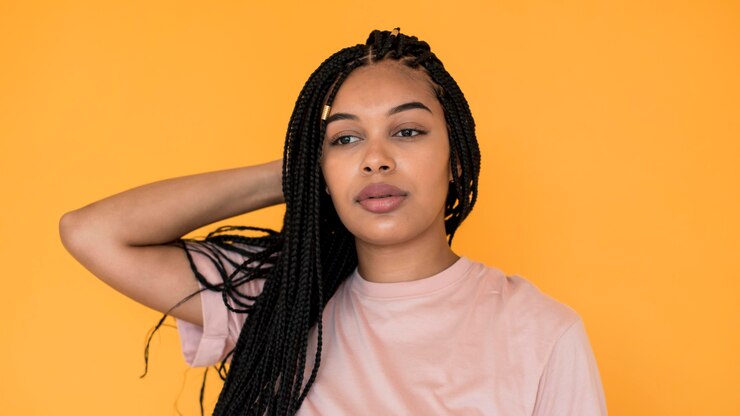South Africa, with its rich cultural tapestry, has given rise to a multitude of vibrant and diverse hairstyles that are not just a form of self-expression but also deeply rooted in tradition. Among the most celebrated styles are braids, cornrows, and twists, each telling a unique story of heritage, identity, and creativity.
- Braids (Amasunzu):
Braids as an Art Form: Braiding, known as “amasunzu” in some South African communities, is an ancient art form that has been passed down through generations. These intricate patterns are not only visually stunning but also carry cultural significance, often representing one’s age, marital status, and societal role. Cultural Symbolism: Different regions and ethnic groups within South Africa have distinct braiding styles. For example, Zulu women are known for their isicholo hats adorned with colorful braids, while Xhosa women often weave their hair into intricate patterns called “imicamelo” during special ceremonies. - Cornrows (Amasunzu):
Historical Roots: Cornrows, or “amaqaba,” have deep historical roots in South Africa. Traditionally worn by both men and women, cornrows served practical purposes, such as keeping the hair neat and manageable. Over time, they have evolved into a form of artistic expression. Social Significance: Cornrows are often more than just a hairstyle; they can convey social status, age, and even familial relationships. Elaborate patterns and designs can be specific to certain tribes or communities, creating a visual tapestry of cultural diversity. - Twists (Isicoco):
Twists as a Statement: Twists, or “isicoco,” are another popular South African hairstyle characterized by strands of hair twisted or coiled. This style is versatile, allowing for various interpretations, from simple twists to more intricate designs. Ceremonial Elegance: Twists are often seen during important ceremonies and celebrations. Brides, in particular, may opt for elaborate twisted hairstyles, symbolizing beauty, purity, and the significance of the occasion.
Modern Trends:
In contemporary South Africa, these traditional hairstyles have experienced a resurgence, embracing a fusion of tradition and modernity. Young people and influencers are reimagining these styles, infusing them with personal flair, and proudly showcasing them on various platforms.
Challenges and Celebrations:
While these hairstyles are deeply cherished, they haven’t been without their challenges. Cultural appropriation and discrimination against certain hairstyles persist in various parts of the world, prompting movements that advocate for the acceptance and celebration of natural, textured hair.
South African hairstyles, including braids, cornrows, and twists, are not just fashion statements; they are living expressions of cultural identity and heritage. They weave together stories of tradition, resilience, and creativity, serving as a testament to the rich tapestry that is South Africa’s diverse and dynamic culture.








